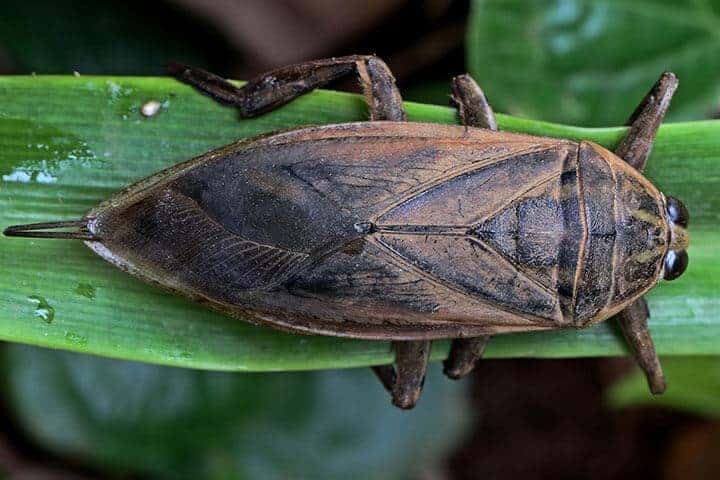What can a Thai water bug teach us about our muscles, especially the heart?
A lot, says Florida State University Professor of Biological Science Kenneth Taylor. New research by Taylor published today in Science Advances gives scientists better insight into how the heart muscle works and how sometimes it fails.
Taylor and his team used an electron microscope to capture the first three-dimensional image of a tiny filament, or strand, of an essential muscle that the palm-sized water bug Lethocerus indicus uses to fly. This filament is made of chains of a protein called myosin, which produce the power needed to contract muscles. This image shows for the first time the individual molecules in the filament in a relaxed state, which is necessary to re-extend muscles.
“After you contract your bicep to see if your muscles look like Arnold Schwarzenegger’s, you need this filament to assume its relaxed structure, so that after contraction your tricep muscle can re-extend your bicep,” Taylor said.
Scientists have long examined the flight muscles from Lethocerus indicus as a way to better understand how the human heart works. Both the insect’s flight muscle and a mammal’s heart beat rhythmically.
Mutations causing many inherited heart muscle diseases have been identified but are difficult to study in mammals because the heart is essential to life. However, these mutations can be studied in insects, specifically through this filament. Mutations that alter myosin function even slightly can have cumulative effects in a muscle contracting rhythmically.
While capturing a clear picture of this exact filament has been difficult, improved technology allowed Taylor and his fellow researchers to record an amazingly detailed image showing the precise filament structure.
All muscles have two types of filaments, actin and myosin. The chief difference between actin and myosin is that myosin has two parts, a molecular motor and a very long rod. The rods from many myosin molecules form the filament backbone. When a muscle contracts, molecular motors on the myosin filament grab and pull on the actin filaments causing the muscle to shorten. The packing of the myosin rods within the backbone must be strong enough to sustain this force.
With this new image, scientists can see how the molecular motors are arranged to prevent contact with the actin filament facilitating the muscle’s re-extension. At the same time they can see the tight packing of the myosin rods much “like a bamboo forest,” Taylor said.
“The image answers a whole lot of questions about myosin filaments that scientists have been wondering about for decades,” Taylor said.
The discovery is even more important because mutations in myosin can cause cardiomyopathy — a disease of the heart muscle. About one-third of myosin mutations that cause cardiomyopathies occur in the rod.
“Many of these cardiomyopathy mutations may be understandable in terms of flawed muscle relaxation,” Taylor said.
This detailed image “shakes up the muscle field,” Taylor said. He hopes this breakthrough leads to novel treatments for cardiomyopathy in the future.
Now Taylor and his team will boost the resolution of these images so they can clearly see individual amino acids and accurately determine the key interactions between them.
“We study insect flight muscle because it is a simpler route to understanding human disease,” Taylor said. “Ultimately, we must understand human disease from either human filaments or at least mammalian filaments.”
Other researchers contributing to the work are FSU molecular biophysics graduate student Zhongjun Hu and Research Associate Dianne Taylor, plus Duke University researchers Michael Reedy and Robert Edwards.
The research is funded by the National Institutes of Health and the American Heart Association.


